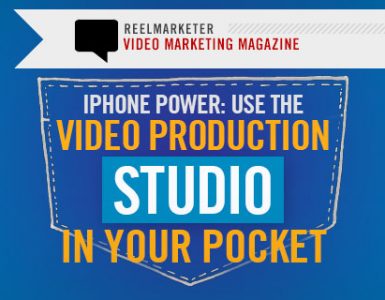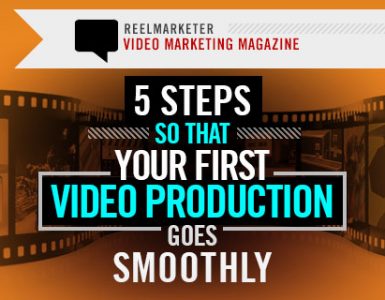Great to have a chance to chat again – for those not in the know, tell us what you've done, and what you do!
CHRIS WALTS: Thanks, always happy to chat!
Digital Strategist is a title that seems to mean different things depending on who you speak with, but I like to say that I get to help dream up and execute cool and compelling content and stories for our clients in a digital environment. On a practical level that means staying on top of current trends and technologies, and then developing strategies for our clients based on their individual needs. I also help maintain their social channels and build communities and conversations around their brands.
My background is actually in Film and Theatre production – I received my BFA from SFU – but I’ve always been passionate about technology, so working online really does seem like a natural fit. As for my spare time, I recently got back from a month long trip to Peru, and am looking at launching a new transmedia project in the fall, so I’m keeping myself busy!
You're currently involved with a large advertising agency with Tribal DDB Vancouver, which is an office of nation-wide DDB Canada. What are some of the big-name clients that DDB works with, you specifically.
CHRIS WALTS: I joined Tribal DDB Vancouver as a Manager of Community Cultivation with Radar (our social media division). Radar eventually joined with Tribal, and I’ve now moved into a new role as a Digital Strategist.
Client wise, I’ve had the opportunity to work on some amazing campaigns. Some of my most memorable have been with The Canadian Tourism Commission, Subaru Canada, BC Hydro, Tourism Kelowna, The University of British Columbia, and BC Salmon Facts.
You've got a keen perspective steeped in visual storytelling with your education in traditional film – you first explored the visual story telling medium as an art. Since then, you've worked on delivering messages to consumers using this medium, and others. Tell us, what is it that makes film/video so compelling and desirable?
 CHRIS WALTS: I think video is a wonderful medium because it is easy medium to create a compelling story for the audience to latch on to. Print or radio ads are ‘quick-hits’ that people often drive by or listen to while doing something else. It takes a very impactful ad to make people sit-up and take notice, they are more about repetition and frequency.
CHRIS WALTS: I think video is a wonderful medium because it is easy medium to create a compelling story for the audience to latch on to. Print or radio ads are ‘quick-hits’ that people often drive by or listen to while doing something else. It takes a very impactful ad to make people sit-up and take notice, they are more about repetition and frequency.
Video, on the other hand, is something we often seek out, or have recommended to us from a trusted source, so we are already primed to be engaged. It also has the benefit of a longer duration so a more complex story can be created. That isn’t to say that print or radio can’t be impactful, or aren’t important, some of my favourite ads are beautiful print pieces; they just perform a very different job.
Sure, I often point out that online video marketing is most often ‘opt-in marketing' – consumers are seeking out something, but it's often ultimately up to them if they push the ‘play' button and sit through and consume the video's message. Another beautiful thing video marketing is it's tracked easily – hard to have a statistic of how many people actually ‘watched' one's print ad.
Exactly, and good point. Ultimately however, everything in a campaign (print, radio, TV, video, online, social, etc.) should be working together to create a complete universe or the brand’s story. I often like to talk about the different between the story and the plot in films to help explain integrated (or transmedia) campaigns. The plot is what we actually see on the screen, the rise, fall, and triumph of our protagonist. The story is the entire universe our protagonist inhabits. Great campaigns build entire universes for the consumer to latch on to. Every piece of advertising provides a different part of the plot to help complete the brand’s story. Video, and the brand’s website, often form the foundation for these campaigns.
“Ultimately however, everything in a campaign (print, radio, TV, video, online, social, etc.) should be working together to create a complete universe or the brand’s story” – Chris Walts
Spoken like a true professional – make a cohesive plan before you start, and integrate your message throughout all the communication mediums you're going to use. Back to Tribal, typically, what does an advertising campaign for a DDB client look like?
CHRIS WALTS: I don’t know that I would consider any advertising campaign typical, but the majority of the work I do is on integrated campaigns. By that, I mean we will develop traditional (TV, print, and radio), online (pre-roll, and banner ads), digital (iPhone apps, Facebook tabs, and websites), and social (Facebook, Twitter, YouTube, Flickr, Tumblr, Instagram, and blogger outreach) campaigns for clients.
Cohesive alright! Tell us how an organization you've worked with/at used video successfully, and what that looked like.
CHRIS WALTS: We done some great work with Subaru Canada that has been very well received. The Sexy Sumo Subaru Forester spot has over a million views on YouTube and our Pure Performance spot has over 300,000. The Choose Your Own Angle videos have also collectively racked up more 300,000 views..
Pure Performance, Subaru Impreza
Oh hell yes – what fun ads! That Subaru Forester campaign looked to be far reaching, beyond Canada's borders at least – having that on YouTube must have seen a halo of exposure in the US and other english-speaking countries. Not that you need to understand English to enjoy it! Did Subaru Canada / Tribal DDB have a metric for ‘success' lined up before they started to gauge usefulness?
I think success really needs to be looked at on a case-by-case level based on the goals for the campaign. Video views are obviously metrics we look at, as is any earned media the videos generate, but sometimes it is an awareness campaign and sometimes we are trying to stimulate sales. Ultimately, it is about sitting down with the client when the project is being conceived and talking realistically about what success for them can, and should, look like.
Okay, fair enough. Obviously the bottom-line is a metric – must have been an interesting experience convincing the client this campaign could be a success.
CHRIS WALTS: I think any success starts with the client. You need to have a client that is willing to take a bit of a risk to do something different and new. If you don’t have that, the process gets exponentially harder. From there, you need a great idea that is well executed, and gets seen by the right people at the right point in time. I also think you need to get a little bit lucky. There are lots of things you can do in the planning stages to try and minimize the amount luck plays in the equation, but you can never remove it entirely.
I'm glad it happened – must have been exciting for DDB and Subaru to see they're ‘new baby' out in the world for the first time on TV/web! You keep mentioning transmedia and integrated marketing – you at Tribal DDB are working on the bleeding edge here. Creating the future as we speak, working on new projects all the time that you're about to release soon. Any predictions for the future of digital marketing, in general (or with regards to video)?
CHRIS WALTS: This is almost a trick question because it is so easy to get horribly wrong, but I’ll give it my best shot!
I think the future of marketing will be a highly a personal targeted immersive experience that crosses all electronic devices. This may sound a little ‘Minority Report‘ spooky, but I think in order for it to work properly it will have to be an opt-in situation which should help. Billboards and display space will change their ad units based on my sex, height, build, and what the weather is like outside, and when I walk into a my favourite store I will get special deals based on previous purchases.
Right, like in the movie how every ad that each individual saw was targeted to them specifically, regardless of the physical wall/screen, etc they were looking at. We see Google doing that using our IP addresses and google accounts, and with RFID tags in cards, why not!
Yes, those technologies as well as facial recognition, ex-cetera. That doesn’t speak much to video specifically though, so let me add that brands will continue to shift to creating interesting content that is cool, so they are seen as tastemakers, rather than trying to give you a hard sell on their product.
We're getting to the end here – what's a common assumption that organizations/businesses have wrong about video that they ought to correct?
[embedit snippet=”ad2″] CHRIS WALTS: First I would say, know why you are making a video, and what you want it to achieve. This may be similar to what I said earlier, but I would never make a video for the sake of making a video. I love videos, they are one of the things I share most on my personal social networks, but you have to know why you are making it or it will fail. One of the easiest ways to figure out why you are making a video is to figure out what you want it to achieve. Are trying to increase sales, or awareness? Maybe you are simply trying to launch a product in a cool way. Each reason is going to have a different look, tone, feel, and duration. You need to have a clear idea as to why you investing the time and money into creating a video. I’ve seen far to many videos that try and do 10 different things at once and fail.
“…know why you are making a video, and what you want it to achieve. I’ve seen far to many videos that try and do 10 different things at once and fail.” – Chris Walts
Great points. Have an idea of what you're going for. What else about video marketing should we keep in mind?
Second, never try to make a viral video. Your reason for making a promotional video should never be to have it go viral. Once you’ve figured out why you are making a video, focus on making the best video you can based on your budget. A lot of people don’t realize that many viral videos had huge budgets behind them, or were part of a larger campaign that helped drive a ton of the traffic. There are also often large-scale outreach efforts to try and get the right people to share the video to help it go viral.
Aim to create an online video that is useful and engaging for your target audience. It’s a much better practice than trying to make a viral.
Third, don’t make your videos long. I don’t know how many branded videos I stop watching after the first minute because they start to drag on. The world is becoming more about wit and brevity; there is no reason for most online videos to be more than about 3 minutes long.
Any advice for businesses looking to use video in their marketing?
CHRIS WALTS: I think the best thing to do is the keep things simple. Figure out who your audience is, what interests them, and then speak to them in terms they’ll understand.
Thanks for sharing Chris. Before we go, is there anything else you would like to share?
CHRIS WALTS: The great thing about the Internet is that the barrier to entry on new and emerging technologies is quite low. Don’t be afraid to jump in and experiment!
Follow @chriswalts on Twitter
Read more and see the incredible work of Tribal DDB Vancouver at www.tribalddbvancouver.com.
Chris' website can be found at: www.chriswalts.com






Nice. There were so many good points in this article, but I have to draw out a few that hit home.
First, the way you divide ‘story’ from ‘plot’… brilliant. I’ve never thought of it that way, but that will certainly inform my writing from now on.
Next, great advise about not aiming to make a viral video. I think that’s what we all want, but from a marketing perspective it is a foolish thing to bring up in a sales meeting unless you have the money, resources and strategy to actually do it.
Last, those videos were great!
Again, thanks for the interview, Chris.
I’m glad you enjoyed the interview. I’m always happy to rattle on about the Internet 🙂